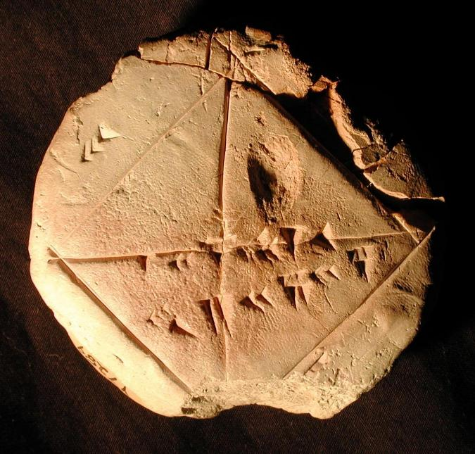Babylonian and the Square Root of 2

The Babylonians used a geometric method to estimate the square root of a number, including the square root of 2. The method involved constructing a square with an approximate side length equal to the given number and repeatedly refining the estimate to get a more accurate approximation.
Let's go through the steps of how the Babylonians estimated the square root of 2 using this method:
Step 1: Start with an initial guess.
The Babylonians chose an initial guess for the square root of 2. For simplicity, let's say their initial guess was 1.
Step 2: Make a square with a side length equal to the initial guess.
They constructed a square with a side length of 1 unit.
Step 3: Improve the estimate.
Now, they wanted to find a better estimate for the square root of 2. To do this, they bisected the square along one of its sides, creating two rectangles.
Step 4: Form a new square.
They then formed a new square by placing the two rectangles together in such a way that the side length of the new square became the average of the two sides of the original square.
Step 5: Repeat the process.
The Babylonians continued the process of bisecting and forming new squares several times, refining their estimate of the square root of 2 with each iteration.
Let's demonstrate this with a few iterations:
1. Initial guess: 1 (side length of the first square)
2. First iteration:
Side length of the new square = (1 + 1) / 2 = 1.5
3. Second iteration:
Side length of the new square = (1.5 + 1) / 2 = 1.25
4. Third iteration:
Side length of the new square = (1.25 + 1) / 2 = 1.125
5. Fourth iteration:
Side length of the new square = (1.125 + 1) / 2 ≈ 1.0625
The more iterations you perform, the closer the side length of the square gets to the actual value of the square root of 2. In this case, after four iterations, the Babylonian estimate of the square root of 2 is approximately 1.0625. The actual value of the square root of 2 is approximately 1.41421356, so the Babylonian method provides a reasonably accurate estimate with just a few iterations.